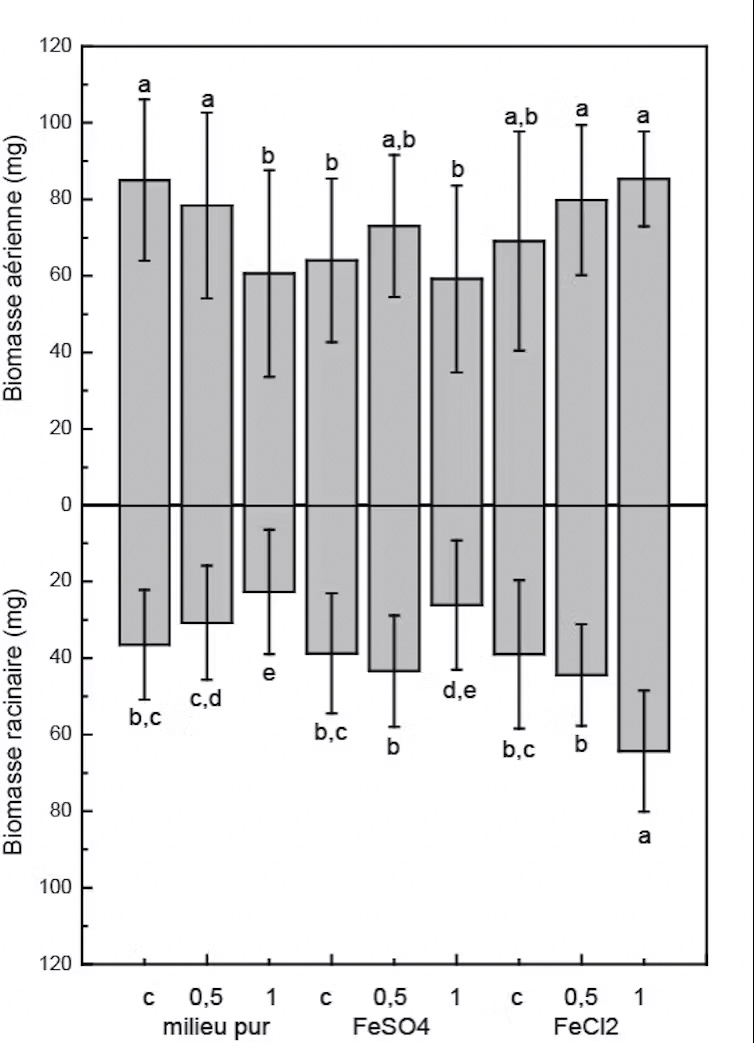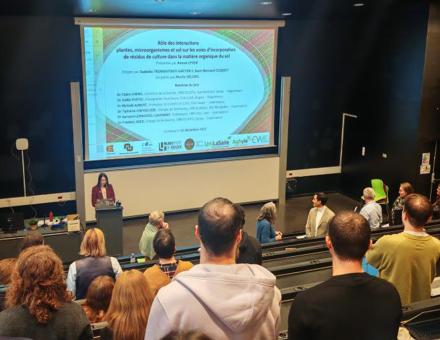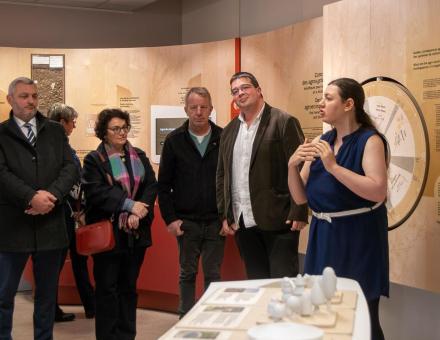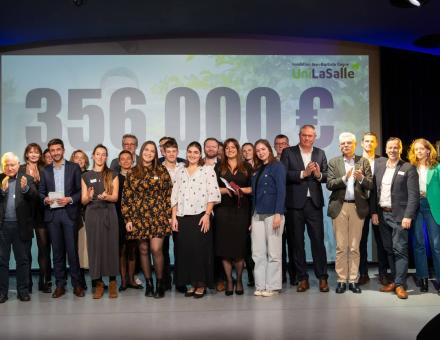Un riz exposé à certaines concentrations de terres rares peut voir sa croissance réduire de moitié. Un phénomène inquiétant qui s'accompagne d'inquiétudes concernant la santé humaine, car une exposition à de fortes concentrations de terres rares via l'alimentation peut aussi être toxique. Décryptage des liens aussi complexes que méconnues entre terres rares et plantes.
Electric cars, smartphones, computers, wind turbines... your daily life is littered with strategic metals. The growing demand for rare earths in particular is putting increasingly significant pressure on global reserves, highlighting the crucial importance of these resources in building a sustainable future.
The term “rare earths” covers seventeen chemical elements that are ubiquitous in electronic devices. Rare earths are found all over the world, but China remains the world's leading producer of these materials. In Europe, Greenland and Norway are among the most scrutinized territories for potential exploitation. This activity presents considerable environmental and health challenges, as does the treatment required after extraction. After all, these operations can generate toxic waste and contaminate soil, waterways and surrounding ecosystems.
Recent studies have highlighted the harmful effects of rare earth pollution on flora and fauna, underlining the need for responsible management of these precious resources.
But the impact of rare earths on plant growth is also a growing concern in the field of agriculture and food safety.
Mobile and polluting rare earths
Rare earth concentration in soils is not only a concern in the vicinity of mining sites, as these elements are mobile and can be transported by water. Indeed, rare earths can migrate through aquatic systems, posing environmental risks over vast geographical areas.
However, it remains difficult to put a precise figure on the percentage of soils affected by the presence of rare earths, as their distribution depends on numerous factors such as local geology, the intensity of mining activities, and the hydrological dynamics that influence their migration. What's more, available data is often fragmentary and varies from region to region.
Nevertheless, the presence of rare earths in soils is a growing concern worldwide. For example, in China, the world's largest producer of rare earths, soil and water pollution by these elements is well documented, particularly in provinces where extraction is intensive, such as Inner Mongolia and Jiangxi. In these regions, soils can be heavily contaminated, leading to serious ecological and health impacts.
Rice with significantly reduced growth
As researchers in geochemistry and functional ecology, we set out to better understand how rare earths influence plant growth, particularly in rice, the staple food of half the world's population.
We found that when rice plants were exposed to certain concentrations of rare earths, a significant reduction in growth and yield was observed (from 30% to 50%).

Effects of rare earths on rice shoot and root biomass. The labels “pure medium”, “FeSO4” and “FeCl2” correspond to experiments conducted in the presence of rare earths at 0.5 mg/L and 1 mg/L, rare earths and 100 μmol/L Fe(II) sulfate, and rare earths and 100 μmol/L Fe(II) chloride respectively. For each of these conditions, labels “c”, “0.5” and “1” correspond to rare earth concentrations of 0 mg/L (control), 0.5 mg/L and 1 mg/L respectively. Error bars correspond to the standard deviation of the measurements. There is no statistically significant difference in biomass between conditions when the same letter is displayed.
But how can this be explained? Our research highlights the complex interactions between rare earths and plant growth. In particular, the application of rare earths to the soil can inhibit the uptake of essential nutrients by plants, compromising their health and productivity. These worrying effects, however, were mitigated by the presence of iron oxides.
Different reactions depending on soil acidity
Clearly, the relationship between soil chemistry and the accumulation of rare earths in plants is a complex and largely unknown subject. We therefore also set out to understand how rare earths behave in soil and accumulate in plants.
By examining soil and plant samples from different environments, we found that certain soil factors, such as pH and organic matter content, influence the uptake of rare earths by plants. For example, plants tend to accumulate rare earths in their aerial parts (stem, buds, leaves, flowers, fruits) in patterns that reflect the composition of the surrounding soil. Factors such as soil pH, texture and mineral composition can also influence the availability of rare earths to plants and their ability to absorb them.
For example, acid soils (such as those found in the Landes region of France, or in Brittany) tend to favor the solubility of rare earths and thus their absorption by plants, while soils rich in organic matter can act as sorbents (solid surfaces capable of complexing these metals), reducing their availability to plants.
These adverse effects of rare earths on plant growth do not stop at the plants that can absorb these elements. Human health concerns are also growing, as these elements can accumulate in the food chain. Studies indicate that exposure to high concentrations of rare earths can cause toxic effects in humans, including risks to the respiratory system, liver and kidneys.
What happens at the root level
But the complexity of the links between rare earths and plants doesn't stop there.
Paradoxically, although rare earths can hinder plant growth in certain concentrations, they can also act in other proportions and contexts, as nutrients that promote plant development. This can be explained by certain root characteristics.
Roots play a crucial role in plants' ability to absorb nutrients from the soil, including rare earths. Plant roots can evolve to exploit soil resources efficiently, developing nutrient acquisition strategies adapted to their environment.
In our research, we have investigated how below-ground features such as root exudation, i.e. the molecules plants release from their roots, and nutrient acquisition strategies, affect plants' uptake of rare earths, right down to their leaves. In addition, we have observed that root exudates released under nutrient-deficient conditions can mobilize rare earths present in the soil, making them more accessible to plants, in order to aid proper plant development.
What rare earths can tell us about plant nutrient acquisition strategies
The ultimate reason to take an interest in the relationship between rare earths and plants: rare earths could enable us to better understand plants' more global strategies for acquiring essential nutrients such as phosphorus and iron, two elements crucial to their growth. In our research, we proposed using rare earths as indicators of nutrient acquisition strategies for plants.
We found that plants with unique phosphorus acquisition strategies accumulated rare earths differently in their tissues. One of the prospects of our research unit is to study the relationship between root depth and total rare earth concentration in the plant, in order to develop non-destructive methods for identifying this key character in plants involved in the acquisition of water, nitrogen and certain micronutrients, and thus offer new methods for selecting varieties adapted to climate change and agroecological practices.
About the authors
Olivier Pourret, teacher-researcher in geochemistry and Scientific Integrity and Open Science Manager, UniLaSalle
Michel-Pierre Faucon, teacher-researcher in plant ecology and agroecology - Director of Research, UniLaSalle Beauvais
Oliver Wiche, biogeochemist, Zittau Görlitz University of Applied Sciences







